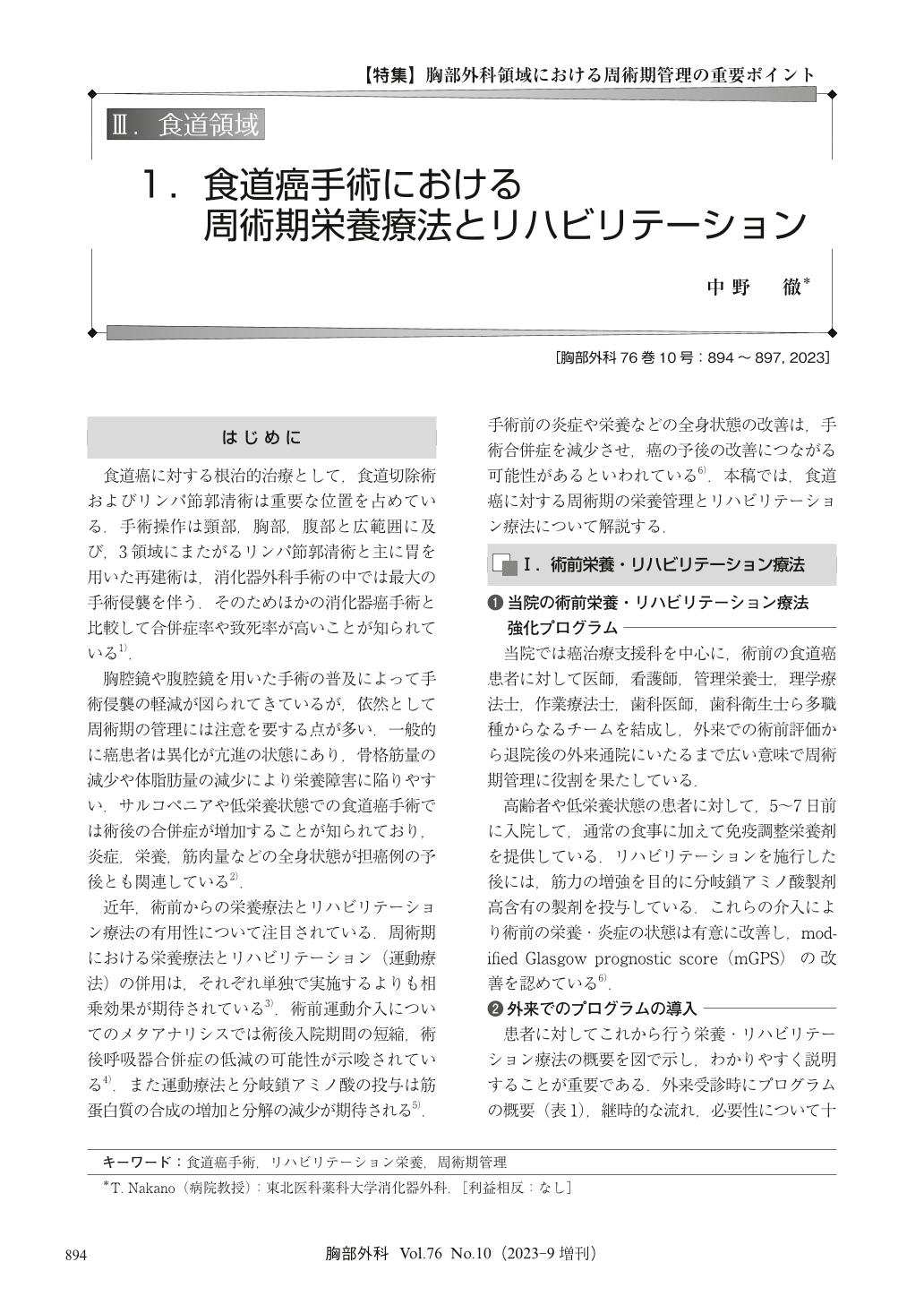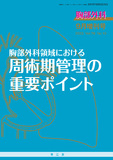Japanese
English
- 有料閲覧
- Abstract 文献概要
- 1ページ目 Look Inside
- 参考文献 Reference
食道癌に対する根治的治療として,食道切除術およびリンパ節郭清術は重要な位置を占めている.手術操作は頸部,胸部,腹部と広範囲に及び,3領域にまたがるリンパ節郭清術と主に胃を用いた再建術は,消化器外科手術の中では最大の手術侵襲を伴う.そのためほかの消化器癌手術と比較して合併症率や致死率が高いことが知られている1).
The combination of nutritional therapy and rehabilitation in the perioperative period is expected to have synergistic effects on nutrition, muscle mass, inflammation, and other systemic conditions. It is important to form a perioperative team composed of members from other professions in order to implement a nutritional rehabilitation program efficiently and explain it in an easy-to-understand manner to patients. Nutritional guidance by a dietitian is provided from the preoperative outpatient visit, and a target daily nutritional intake is established. A feeding tube or percutaneous endoscopic gastrostomy (PEG) may be considered for patients with inadequate oral intake. Products containing branched-chain amino acids should be administered after exercise. Preoperative upper and lower limb muscle strengthening training is provided by physical and occupational therapists, and postoperative coughing and standing exercises are performed at the same time to facilitate the introduction of postoperative training. Postoperative nutritional management is primarily enteral nutrition through a tube enterostomy tube. Oral intake is resumed after fluoroscopy on day 7. The patient will be trained in bed for joint mobility, sitting on the edge of the bed, and standing on day 1. Gait training is started on day 2. After the third day, gait training is performed in the ward, and stretching, strength training, bicycle ergometer, and other exercises are performed in the training room. It is important to provide seamless nutritional rehabilitation therapy from preoperative to postoperative outpatient.

© Nankodo Co., Ltd., 2023


